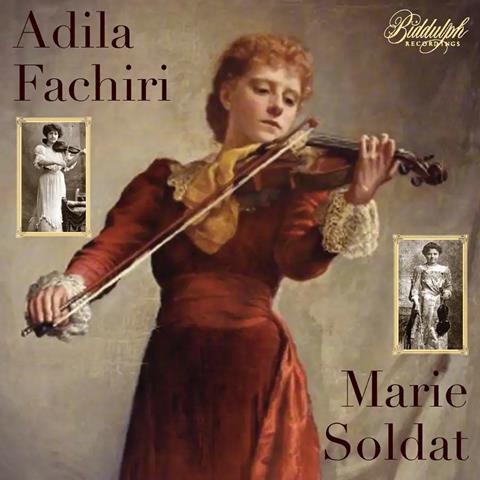An enticing snapshot of two towering violinists from the past

The Strad Issue: June 2024
Description: An enticing snapshot of two towering violinists from the past
Musicians: Marie Soldat, Adila Fachiri (violins) Donald Tovey, Otto Schulhof (pianos)
Works: Beethoven: Violin Sonata no. 10 in G major op.96; Romance in F major op.50. Mozart: Violin Concerto no.5 in A major K219: Allegro aperto. Spohr: Violin Concerto in D minor op.55: Adagio; works by Bach, Schumann and Tovey
Catalogue number: BIDDULPH 85044-2
Three remarkable musicians influenced by Joseph Joachim are represented here. Violinist Marie Soldat (1863–1955), was close to both Brahms and Clara Schumann; Donald Francis Tovey (1875–1940), was a towering figure as pianist, conductor and musicologist; and violinist Adila Fachiri (1886–1962) was the eldest of the d’Arányi sisters.
The 1928 performance of Beethoven’s G major Sonata by Fachiri and Tovey is an exploratory, expressive reading unlike the power and certainty of Busch–Serkin or Oistrakh–Oborin. The balance favours the piano, which accords with the composer’s priority; and Biddulph append Tovey’s spoken injunction to listeners to go back to the beginning to get the exposition repeat.
The set’s filler, the Andante from Bach’s BWV1015, features lovely trills from Fachiri, also heard in the Beethoven. On her own in 1925–6 she plays movements from the Partitas in B minor and E major with nice light and shade. Tovey’s cogent 1935 conjectural completion of Contrapunctus XIV from The Art of Fugue is a splendid bonus.
Watch: Rachel Barton Pine talks about the Guarneri ‘del Gesù’ ‘Soldat’ violin, 1742
Read: Twisted History: Female violinists and the Brahms concerto
Soldat’s 1921 records find her in retirement, in full possession of her facility but, like Ysaÿe in 1912, no longer commanding the power once admired in Brahms’s concerto. The main treasure is the Adagio from Spohr’s D minor Concerto, niftily played – as a grandpupil of the composer, she knew his style as few have done.
Soldat also musters vigour and style for the opening movement of Mozart’s K219, featuring the cadenza by her last teacher Joachim, and Beethoven’s Second Romance. Schumann’s Abendlied is sensitive but Bach’s Air is a bit lugubrious. She is well accompanied by Otto Schulhof. Two solo Bach movements are missing their beginnings because the rare discs are chipped.
The CD is well presented, with Emma Irlam Briggs’s painting of her violinist sister Agnes on the cover.
TULLY POTTER










































No comments yet